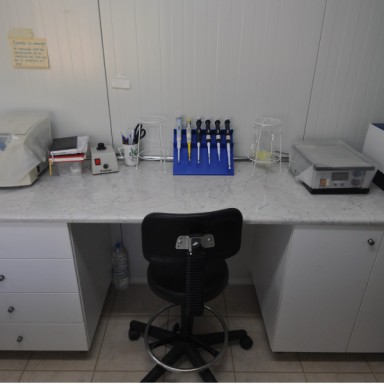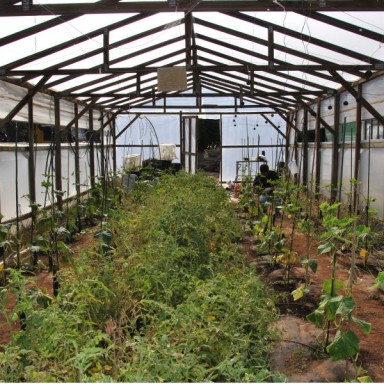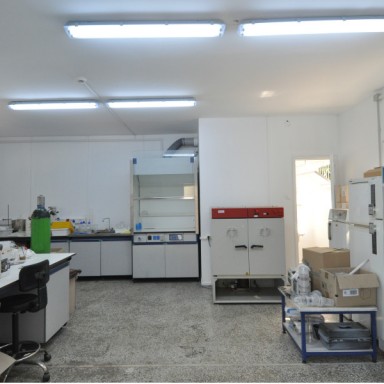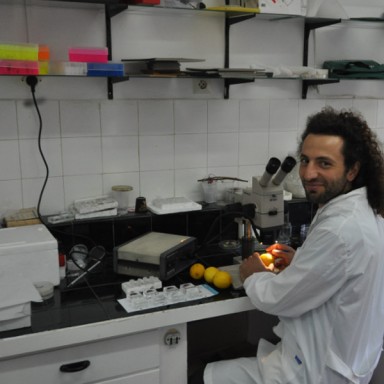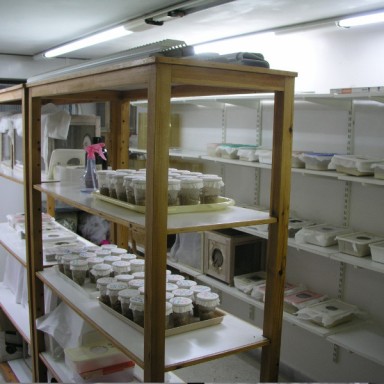Biological Control Laboratory
July 5, 2014 | Uncategorized
Biological Control Laboratory
Department of Entomology and Agricultural Zoology
Benaki Phytopathological Institute
For more information about the Laboratory please click here
- Study on the presence and recording of scale insects in Greece – development of monitoring methods and biological control strategies.
- Biology and control of mealy bugs in several cultivated plants (mainly in viticulture, citrus groves, vegetables)
- Behavioral Ecology
- Chemical Ecology
- Pest Risk Analysis, Invasion modeling.
- NSRF ARISTEIA ΙΙ (Trichoindo) 2014-2015 «Use of oviposition-induced plant volatiles by Trichogramma parasitoids». Coordinator: BPI. www.trichoindo.gr
- GSRT Cooperation between Greece and Hungary 2012-2013 Study of insect pest invasions, by focusing on scale insects (Hemiptera: Coccoidea) in southern part of the European Union in relation with climate change. Coordinator: BPI. www.bpi.gr
- LIFE CONOPS 2012-2017 Development & demonstration of management plans against -the climate change enhanced- invasive mosquitoes in S. Europe. Coordinator: BPI. http://www.conops.gr/
- FP7 (PalmProtect) 2012-2015 Strategies for the eradication and containment of the invasive pests Rhynchophorus ferrugineus Olivier and Paysandisia archon Burmeister. Coordinator: DEFRA https://secure.fera.defra.gov.uk/palmprotect/index.cfm
- PestPractice (Leonardo) 2013-2015 Advancing work safety for pest control workers. Coordinator: BPI http://www.pestpractice.eu/
- SURVEYS 2011-2014 Surveys for recognizing protected zones of quarantine pests. Coordinator: BPI http://www.bpi.gr/section.aspx?id=2&subid=233
Selected projects implemented in the Biological Control Laboratory
- LIFE ECOPEST 2009-2012 Strategic plan for the adaptation and application of the principles for the sustainable use of pesticides in a vulnerable ecosystem. Financing: European Union (EcoPest LIFE). Coordinator. www.ecopest.gr
- LIFE Hydrosense 2010-2012 “Innovative technologies optimize precision irrigation and integrated crop management in water stress environments”. Coordinator: Goulandri Museum of Natural History. http://www.hydrosense.org/
- FP7 PlantHeal 2009-2011 Development of Benaki Phytopathological Institute as a Centre of Excellence in Plant Health and Crop Protection. Financing: European Union (FP7-REGPOT-2008-1). Coordinator: BPI. http://bpi-plantheal.gr/index.php
- Hellenic Aid 2010-2011 «Optimizing olive cultivation in Palestine» Coordinator: BPI.www.bpi.gr
Researchers
 Dr Panagiotis Milonas
PhD, 2002, Aristotle University of Thessaloniki
Dr Panagiotis Milonas
PhD, 2002, Aristotle University of Thessaloniki
|
 Georgios Partsinevelos
MSc, University of Newcastle, UK
Georgios Partsinevelos
MSc, University of Newcastle, UK
|
 Dr Nikos Papanikolaou
PhD, 2013, University of the Aegean
Dr Nikos Papanikolaou
PhD, 2013, University of the Aegean
|
 Dr Eirini Anastasaki
PhD, 2014, Agricultural University of Athens
Dr Eirini Anastasaki
PhD, 2014, Agricultural University of Athens
|
Previous laboratory members
Dr Kelly Martinou, Cyprus University of Technology
Dr Natasa Fytrou,
Dr Vasiliki Gkounti, Chemical Ecology, Plant Protection Biology, Swedish University of Agricultural Sciences, Alnarp, Sweden
Selected publications
- Gkounti, V.T., Savopoulou-Soultani, M., Milonas, P.G. 2014. Asymmetrical intraguild predation between natural enemies of the citrus mealybug. Entomologia Experimentalis et Applicata, 151 ( 2 ) pp. 122 – 127.
- N. E. Papanikolaou, P. G. Milonas, D., N. Demiris, D. Papachristos and Y. G. Matsinos. 2014. Digestion Limits the Functional Response of an Aphidophagous Coccinellid. Annals of the Entomological Society of America, 107(2): 468-474.
- Panagiotis G. Milonas , Dimitrios Ch.Kontodimas, Angélique F. Martinou. 2011. A predator’s functional response: influence of prey species and size. Biological Control, 59: 141-146. doi: 10.1016/j.biocontrol.2011.06.016.
- Milonas, PG; Farrell, S.; Andow, D. 2011. Experienced males have higher mating success than virgin males despite fitness costs to females. Behavioral Ecology and Sociobiology, 65: (6), 1249-1256.
- Milonas, P.G. and D.A. Andow. 2010. Virgin male age and mating success in Ostrinia nubilalis (Lepidoptera: Crambidae). Animal Behavior 79: 509-514.
- Martinou A.F., Raymond B., Milonas P.G., Wright D.J. 2010. Impact of intraguild predation on parasitoid foraging behaviour. Ecological Entomology 35, 183–189.
- P. G. Milonas, A. F. Martinou, D. Ch. Kontodimas, F. Karamaouna and M. A. Konstantopoulou. 2009 Attraction of different Trichogramma species to olive moth sex pheromone. Annals of Entomological Society of America 102:1145-1150.
- A.F. Martinou, P.G. Milonas, D.J. Wright. 2009. Patch residence decisions made by Aphidius colemani in the presence of a facultative predator. Biological Control, 49:234-238.
- S. S. Andreadis, F. Álvarez-Alfageme, I. Sánchez-Ramos, T. J. Stodola, D. A. Andow, P. G. Milonas, M. Savopoulou-Soultani, and P. Castañera. 2007. Frequency of Resistance to Bacillus thuringiensis Toxin Cry1Ab in Greek and Spanish Population of Sesamia nonagrioides (Lepidoptera: Noctuidae). J. Econ. Entomol. 100 (1): 195–201.
- E.M. Hegazi, M.A. Konstantopoulou, P. Milonas, A. Herz, W.E. Khafagi, A. Zaitun, S. Mostafa, I. Helal, and S. El-Kemny, B.E. Mazomenos. 2007. Mating disruption of the jasmine moth Palpita unionalis (Lepidoptera: Pyralidae) using the two pheromone components blend: A case study over three consecutive olive growing seasons in Egypt. Crop Protection 26: 837–844.
- Herz A, Hassan, S.A., Hegazi, E., Khafagi, W.E., Nasr, F.N., Youssef, A.I., Agamy, E., Blibech, I., Ksentini, I., Ksantini, M., Jardak, T., Bento, A., Pereira, J.A., Torres, L., Souliotis, C., Moschos, T., Milonas, P. 2007. Egg parasitoids of the genus Trichogramma (Hymenoptera, Trichogrammatidae) in olive groves of the Mediterranean region. Biological Control 40: 48-56.
- Basilis E. Mazomenos, Christos A. Athanasiou, Nickolas. Kavalieratos and Panagiotis Milonas. 2004.Evaluation of the major female Eurytoma amygdali sex pheromone components, (Z,Z)-6,9-tricosadiene and (Z,Z)-6,9-pentacosadiene for male attraction in field tests. J. Chem. Ecol. 30:1245–1255.
For full publication list press here


